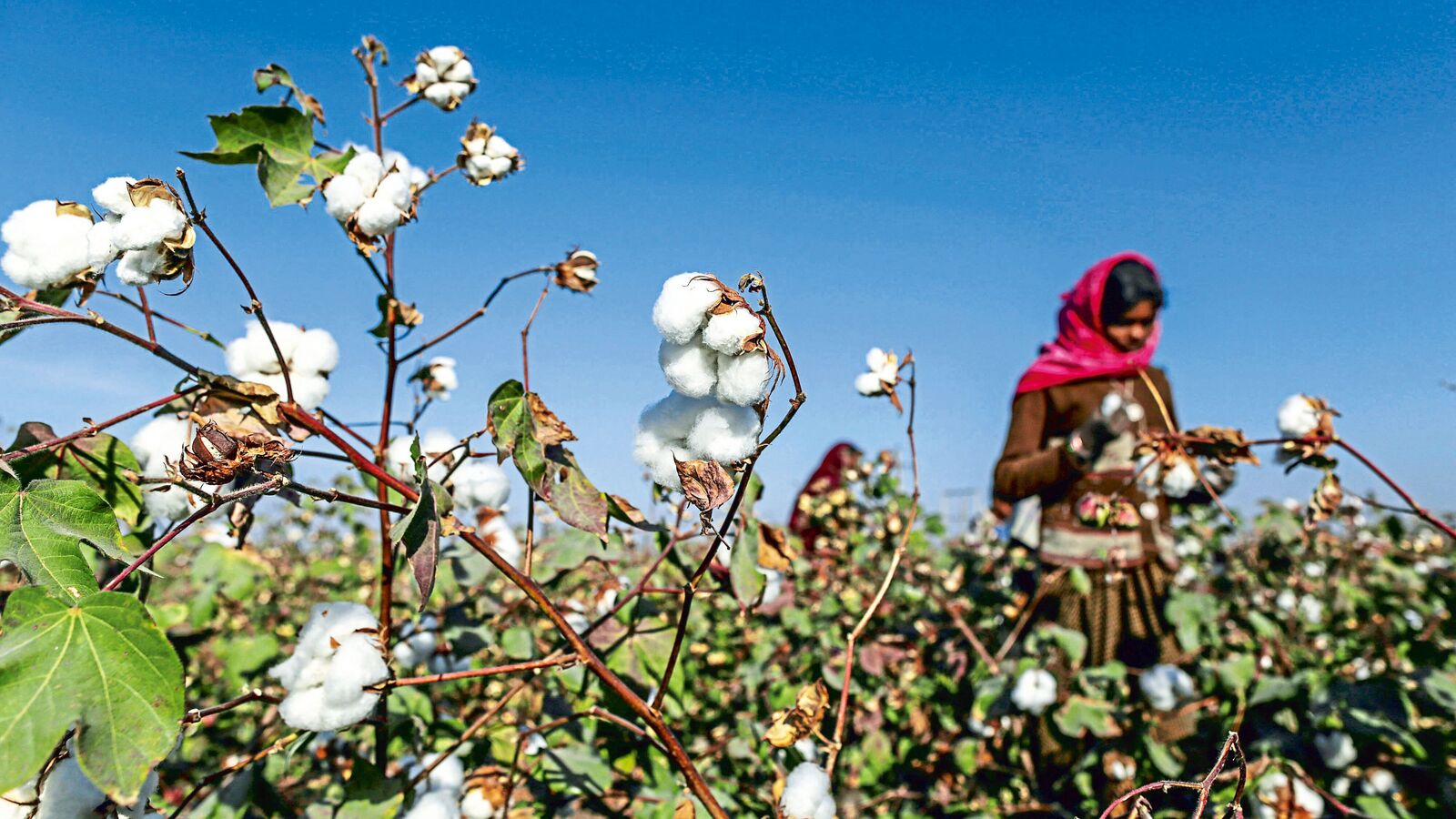The Centre plans to develop climate-resilient seed varieties to boost productivity and improve farmers’ incomes. The agriculture sector, employing about 42.3% of the population and contributing 18.2% to the GDP, is facing challenges such as climate change, leading to inconsistent yields.
A case in point is cotton, whose imports are set to rise by 42% to 2.5 million bales in the current financial year, even as exports drop by 37% to 1.8 million bales, according to the Cotton Association of India (CAI).
Trends and budget allocations
In FY25, the ministry of agriculture is expected to spend ₹1.36 trillion, including an additional ₹13,407 crore for which Parliament’s nod was secured in January, showing a more-than-16% jump in spending.
The government has raised the allocation for ‘agricultural education’ from the revised estimate of ₹2,574.36 crore in FY24 to ₹2,780.39 crore in FY25, reflecting an 8% increase. However, the overall allocation for the Department of Agricultural Research and Education saw only a marginal rise to ₹9,941.09 crore in FY25 from ₹9,876.609 crore in FY24 (RE).
The government has already announced the release of 109 high-yield and climate-resilient varieties of 32 crops, which will take around three years to reach farmers.
“The focus will be on making quality seeds available to farmers through improved traceability to boost the production of key crops. With this approach, all production targets can be achieved if farmers have access to certified seeds developed by agricultural institutions,” said the first among the two persons mentioned above.
CII’s proposal and long-term goals
The Confederation of Indian Industry (CII), in a proposal, has urged the government to introduce a Production-Linked Incentive (PLI) scheme specifically for the seed industry, along with a Research-Linked Incentive scheme.
The rationale behind this demand is India’s modest share of just 1% in the global seed export market. With the implementation of appropriate policies, the country has the potential to capture 10% of the $14-billion global seed trade, equivalent to around ₹10,000 crore, by 2028, as per CII.
To achieve this, India would require significant infrastructure development, including the establishment of seed export zones equipped with greenhouses, processing and packing facilities, dry ports near production hubs for faster seed movement, and appropriate storage infrastructure.
“The budget announcement may focus on simplifying commercial and research operations across states, aligning regulations between central and state governments, and streamlining regulatory approvals for faster market access,” said the second person.
The production of pulses has continued to decline, from 27.3 million tonnes in FY22 to 26 million tonnes in FY23, and 24.5 million tonnes in FY24, according to agriculture ministry data.
According to the data, over the last 5 years, the most that India produced was 27.3 million tonnes, in FY22. The lowest, 23 million tonnes, came in FY20.
Oilseed production has witnessed fluctuations, rising from 37.96 million tonnes in FY22 to 41.36 million tonnes in FY23 before declining to 39.67 million tonnes in FY24.
Cotton has followed a mixed trajectory but is largely on a downward trend. It stood at 31.12 million bales in FY22, increased to 33.66 million bales in FY23, and then declined to 32.52 million bales in FY24, with a further dip estimated at 29.93 million bales in FY25. One bale weighs 170 kg.
“We need hybrid seeds to sustain cotton farming. Our production is declining, and with high input costs, we are left with no better income. The longer it takes in hybrid development, the more likely farmers may leave cotton farming and opt for other crops like soybean,” said Ganesh Nanote, a cotton farmer in Maharashtra’s Vidarbha region.
According to a Niti Aayog report released in February 2024, India’s pulse production is expected to rise to around 47 million tonnes by 2047-48, up from 23 MT in 2019-20. During this period, demand for pulses is projected to grow to nearly 49 MT, leaving a gap of about 2 MT.
For edible oils, the report also projected demand to rise to around 31 million tonnes by 2047-48, up from 22 MT in 2019-20. It estimated that the production of edible oils would grow to around 24 MT from 12 MT during the same period, resulting in a demand-supply gap of about 7 MT.
This suggests that India’s dependency on imports will continue.
Ends
agriculture,high yield,climate-resilient seeds,GDP,Union budget,pulses,edible oils,cotton,Cotton Association of India
#Budget25 #Money #developing #highyielding #climateresilient #seeds



